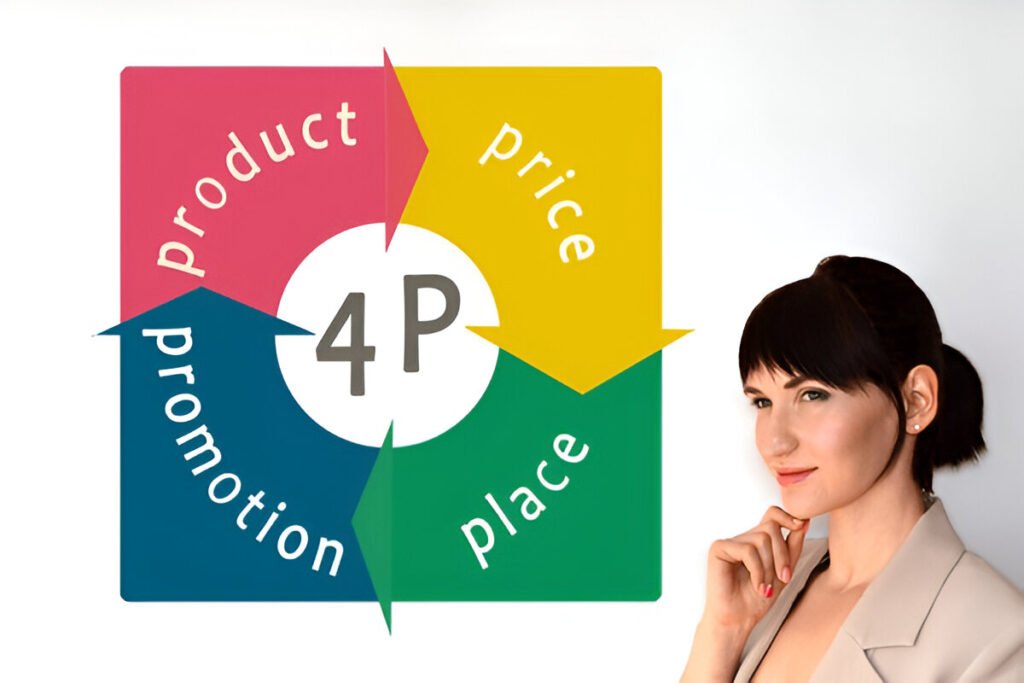What Are the 4 P’s of Marketing for Nike?

When you think of Nike, what comes to mind first? A pair of sneakers? A powerful ad? Maybe that iconic slogan, “Just Do It”?
Behind all of that lies a strong marketing strategy — one that’s smart, calculated, and constantly evolving. Like most big brands, Nike leans on a classic concept known as the 4 P’s of marketing: product, price, place, and promotion.
Let’s walk through each of these, not with textbook terms, but in plain language, with a focus on how Nike applies them in the real world.
1. Product
What Nike Sells (And What You Really Buy)
Nike makes more than shoes. Yes, that’s their bread and butter, but the brand covers everything from sports bras to fitness apps.
But here’s the catch — people aren’t just buying gear. They’re buying what the brand stands for.
Take a simple pair of Air Max sneakers. They carry design, tech, and a bit of nostalgia. Or look at their collabs with athletes — you’re not just buying a shirt or a jersey; you’re buying into someone’s story, their journey, their edge.
Nike invests heavily in R&D too. That’s how they stay ahead with products that are lighter, faster, and more comfortable than what came before. Every little detail is planned out — right down to the box design and material choice.
2. Price
Not Cheap, But Worth It
Nike doesn’t aim to be the cheapest option out there. And honestly, they don’t need to.
Their pricing matches the value they promise. It’s not just about what the product is made of, but also what it means to wear it.
They’ve nailed tiered pricing. Limited editions can go for hundreds (or even thousands), while more standard models are still within reach for many. This allows Nike to stay premium while still being accessible to different kinds of shoppers.
Also, notice how they avoid awkward price points. It’s usually something like $119 or $89.95 — not $100 or $90 flat. It feels less expensive, even if it’s only a few cents lower.
3. Place
How Nike Reaches You
Nike is almost everywhere, but they’re smart about how they show up.
Their main stores are designed more like experiences than retail outlets. When you step into one, you’re not just shopping — you’re surrounded by screens, stories, athlete images, and sections for customizing your gear.
Online, they’ve got things just as smooth. Whether you’re using their app or website, it’s quick, easy, and even personalized. You’ll see product suggestions based on your behavior or what others like you are browsing.
But here’s what’s really clever: they don’t try to own every channel. Nike works with select partners — think Foot Locker or JD Sports — who can extend their reach without messing up their brand image.
4. Promotion
Telling Stories That Stick
Promotion is where Nike really shines.
They’re not just pushing products. They’re telling stories. Emotional, raw, often inspiring stories.
Remember the Colin Kaepernick campaign? Or the ads showing Serena Williams breaking barriers? Those weren’t just ads. They were cultural moments.
Nike chooses ambassadors who are more than athletes. They’re icons, change-makers, role models. And they rarely speak directly about shoes — the message is always bigger than that.
Social media is a huge part of this. But unlike many brands, Nike doesn’t post for the sake of filling a feed. Their content feels thought-out. Whether it’s an Instagram story or a YouTube mini-doc, there’s always a strong message.
What’s even better — fans do a lot of the promotion for them. People love posting about new kicks, workouts, or goals in Nike gear. It becomes a loop — Nike fuels the culture, and the culture feeds Nike’s brand.
Why Nike’s 4 P’s Work So Well
Here’s the thing: most companies try using the 4 P’s, but few do it like Nike.
The difference? Nike ties everything together.
Their product lines fit their story. The pricing matches their value. Their placement feels natural, not pushy. And their promotions hit you emotionally, not just visually.
It’s all connected. Nothing feels random. Whether you’re seeing a commercial, scrolling their website, or walking into a store — it feels like one, unified brand.
And Nike isn’t static. They’re always adjusting. If something’s not working, they test, tweak, and go again. That’s part of what makes them stand out. They’re consistent, but never stuck.
Understanding Nike’s 4 P’s helps explain why their advertising is considered such effective emotional branding.
Final Thoughts
So, what are the 4 P’s of marketing for Nike?
They are:
-
Thoughtful products that people actually care about.
-
Pricing that reflects both value and aspiration.
-
Smart placement that makes shopping feel easy and engaging.
-
Promotions that go beyond selling to inspire and connect.
Nike doesn’t treat these as separate departments. They work together, all aiming at one thing — creating a brand that people don’t just wear, but believe in.
If you’re building a business or a brand, Nike’s approach is something worth studying. Not because they’re perfect, but because they understand how people think, feel, and buy.
And at the end of the day, that’s what real marketing is all about.





